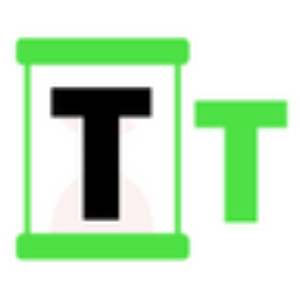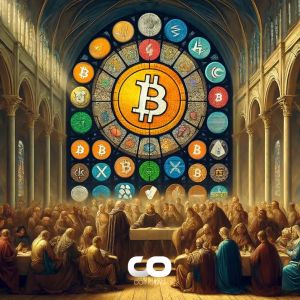Researcher Presents 8 Documents to Explain Why XRP Could be the Next Bitcoin
4 min read
A crypto researcher and prominent figure in the XRP community, known as SMQKE, has compiled findings from eight distinct reports to support the idea that XRP could achieve a level of significance similar to that of Bitcoin. His analysis follows recent comments from media personality Dave Portnoy , who disclosed that he invested in XRP not due to detailed research, but from a desire to avoid missing out if the asset experiences a dramatic surge in value. To substantiate the possibility of XRP becoming a dominant force in digital finance, SMQKE referenced a range of studies and institutional documents, each outlining XRP’s unique technological and structural attributes. WHY XRP COULD BE THE NEXT BITCOIN “The difference between the XRPL and other major blockchain networks such as Bitcoin and Ethereum is that XRPL uses the Federated Byzantine Agreement (FBA) as its consensus mechanism, which makes its settlement extremely fast…Because of… https://t.co/HlnFrMhHiV pic.twitter.com/jkFA7bQAGs — SMQKE (@SMQKEDQG) May 16, 2025 XRP’s Transaction Model and Speed Advantage One of the primary points raised stems from a 2022 report titled First Demonstration Experiment for Energy Trading System EDISON-X using XRP Ledger. This document explains that the XRP Ledger utilizes a Federated Byzantine Agreement (FBA) consensus mechanism, differing from Bitcoin and Ethereum’s energy-intensive systems. This allows XRP transactions to be confirmed in 3 to 5 seconds with minimal cost and high scalability. The same report noted the XRP Ledger’s environmental advantage, having achieved carbon neutrality in 2020. It also indicated that XRPL supports advanced use cases such as decentralized finance (DeFi) and non-fungible tokens (NFTs), positioning it for long-term utility beyond simple transfers. Industry Recognition and Institutional Endorsement Further support comes from discussions at DC Fintech Week, where experts emphasized the importance of functional cryptocurrencies in modern finance. XRP was identified as one of the few digital assets contributing meaningfully to financial innovation. Additionally, SMQKE referenced a report by Morgan Stanley highlighting XRP’s energy efficiency compared to Bitcoin. The bank’s research recognized that while XRP’s framework may lean toward centralization, it also mirrors some aspects of traditional banking, which could enhance regulatory compatibility and mainstream adoption. A separate analysis from Trade Finance Global further underscored the token’s role in cross-border payments. Describing XRP as a “Bitcoin for banks,” the report noted that Ripple’s infrastructure has already been adopted by several financial institutions aiming to modernize international money transfers. We are on twitter, follow us to connect with us :- @TimesTabloid1 — TimesTabloid (@TimesTabloid1) July 15, 2023 Compliance and Financial Integration Another document cited by SMQKE came from nocash.ro, which examined XRP’s readiness for the ISO 20022 standard, an international messaging protocol for financial institutions. The token was among the few crypto assets positioned to comply with this framework, potentially giving it a competitive edge in aligning with central bank digital currencies (CBDCs). The Asian Development Bank also contributed to the conversation, asserting that XRP—unlike many decentralized cryptocurrencies—often operates within formal financial systems. This distinction could help it integrate more seamlessly into the established financial infrastructure. Regulatory Insight and National Relevance In a 2018 letter addressed to the U.S. Federal Reserve, Brenden Sheehan, a concerned banking customer, advocated for the adoption of Ripple’s technology. He emphasized Ripple’s speed, security, and potential to enhance outdated American payment systems. His recommendation warned that without such upgrades, the U.S. risked falling behind other nations advancing in financial innovation. Lastly, a study by the Waterford Institute of Technology concluded that Ripple provides notable improvements over both the SWIFT network and Bitcoin’s architecture. The findings suggested that banks could adopt Ripple’s system to offer more efficient and reliable services to consumers and businesses. Drawing on these eight distinct documents, SMQKE argues that the asset has demonstrated the characteristics, institutional interest, and technological foundation necessary to potentially rival Bitcoin in global relevance. While the future remains uncertain, the evidence presented outlines a clear case for the token’s long-term potential in the evolving financial ecosystem. Disclaimer : This content is meant to inform and should not be considered financial advice. The views expressed in this article may include the author’s personal opinions and do not represent Times Tabloid’s opinion. Readers are urged to do in-depth research before making any investment decisions. Any action taken by the reader is strictly at their own risk. Times Tabloid is not responsible for any financial losses. Follow us on Twitter , Facebook , Telegram , and Google News The post Researcher Presents 8 Documents to Explain Why XRP Could be the Next Bitcoin appeared first on Times Tabloid .

Source: TimesTabloid



